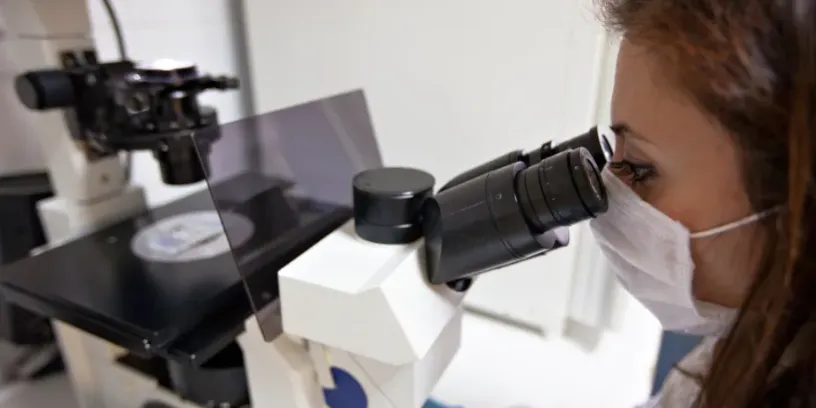British Science Week is a ten-day celebration of science, technology, engineering, and maths (STEM), making it the perfect time to highlight the evolving landscape of STEM careers. This year’s theme, Smashing Stereotypes, shines a light on the increasing diversity within the sector—a transformation that has significantly shaped Engineering & Manufacturing in recent years.
As recruitment specialists, we’re on the frontline, engaging with both employers and job seekers daily. This gives us a unique perspective on industry trends, from shifts in company culture to changing candidate expectations and priorities. In this blog, we explore the key developments influencing STEM careers and how businesses can attract and retain top talent in a competitive market.
Times are Changing in STEM
STEM fields have traditionally been male-dominated, but in recent years, more women have entered these roles, driving a shift in workplace diversity. We have seen a growing number of candidates from a wider range of backgrounds applying for positions. At the same time, companies have increasingly recognised the importance of diversity and inclusion, placing it higher on hiring managers’ agendas.
Talent shortages are a challenge across many industries, but the engineering and manufacturing sector has faced persistent skills gaps for years. This has forced employers to rethink their recruitment strategies and focus on how to attract and retain the best talent. A company’s Talent Value Proposition, the commitment made to candidates about what they can expect in return for their skills and experience, has become a critical factor. More businesses are turning to recruitment marketing to enhance their employer brand and clearly communicate the values and benefits of joining their organisation.
To address workforce shortages and build more inclusive teams, businesses need to expand their search and actively encourage applications from underrepresented groups. This approach not only helps bridge the skills gap but also creates more dynamic and innovative workplaces.
Candidates First: Adapting for a Diverse Workforce
Candidates today are more selective about where and how they work. They are paying closer attention to company policies, particularly those that affect work-life balance and inclusivity. Maternity and childcare policies, for example, are key considerations for many women entering the sector. When these policies are well-implemented and actively supported, they send a strong signal that the company values diversity and is committed to creating an inclusive environment.
To attract and retain a diverse workforce, businesses must identify and remove barriers that may prevent employees from thriving. A workplace that prioritises safety, support, and fairness will naturally appeal to more candidates. Beyond this, opportunities for career growth, training, and mentorship programmes are becoming essential for those seeking long-term professional development.
However, the challenge starts long before recruitment. Building a sustainable pipeline of qualified and engaged candidates requires investment in outreach, education, and engagement from an early stage. The key question is how to inspire and support the next generation of diverse STEM professionals.

Breaking Barriers for Women and Girls
According to the UK government website, the number of girls starting STEM A-levels in England increased by almost 30% between 2009 and 2020. During the same period, the number of women accepted onto full-time STEM undergraduate courses grew by 50.1% across the UK. Despite this progress, women still made up only 29.4% of the STEM workforce in 2020. While this figure is rising, progress remains slow.
So, what are the key challenges holding women back in STEM?
Societal stereotypes – Traditional gender norms can discourage girls from pursuing STEM subjects from an early age. Challenging these perceptions and fostering an inclusive learning environment is essential.
Workplace bias – Women in STEM careers may face discrimination, unconscious bias, or microaggressions. Building a workplace culture that truly supports diversity and inclusion is key to addressing this.
Lack of representation – The visibility of successful women in STEM remains low, which can make it harder for young girls to see these careers as viable options. Showcasing female role models in STEM can help to inspire the next generation.
The saying “you can’t be what you can’t see” rings true. As more women take on STEM roles, their presence will increase visibility and inspire future generations. Girls in schools will begin to see a broader range of career possibilities, and with skills like problem-solving, curiosity, teamwork, and collaboration already abundant among women, the potential for change is clear.
The Future of STEM
While historical barriers have limited the number of women in STEM, there are signs of progress. The number of women in engineering roles, for example, has grown significantly, with women now making up 16.5% of all engineers - an increase of over 25% since 2016.
Encouraging greater diversity in recruitment is not just about expanding the talent pool but also about ensuring teams reflect the wider population. The gender gap is still evident, but national initiatives have helped to drive change, encouraging more girls and women to consider careers in STEM. This progress, while steady, is moving in the right direction.
Inclusive recruitment practices play a crucial role in removing barriers, making roles more accessible, and increasing awareness of policies that support women in the workplace, such as childcare provisions and menopause support. While there is still work to be done, meaningful change is happening.
We are committed to advocating for diversity and inclusion, working closely with both clients and candidates to support inclusive hiring practices. Whether you’re a candidate looking for your next role, an employer searching for top talent, or a business seeking guidance on inclusive recruitment, get in touch with the team for a free consultation.

